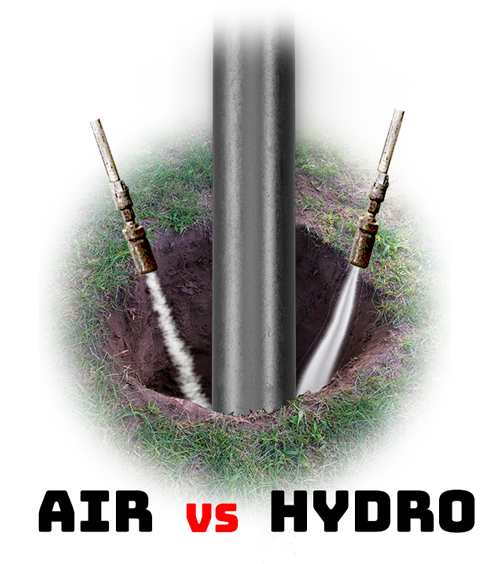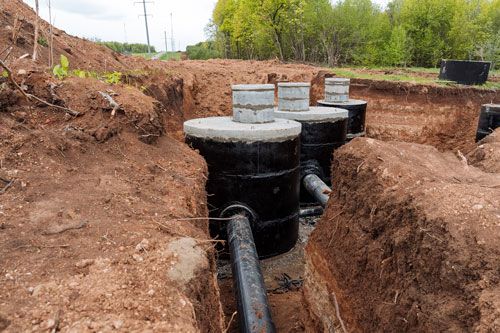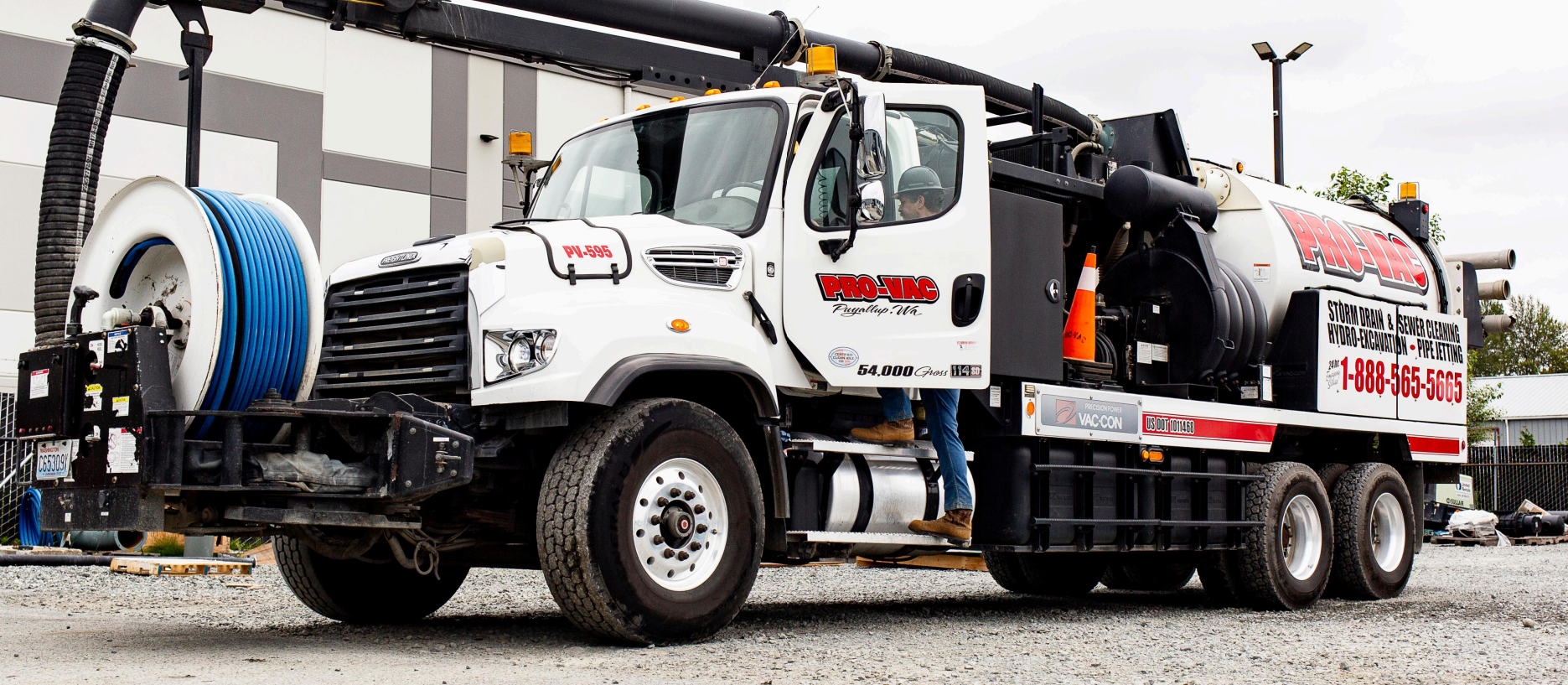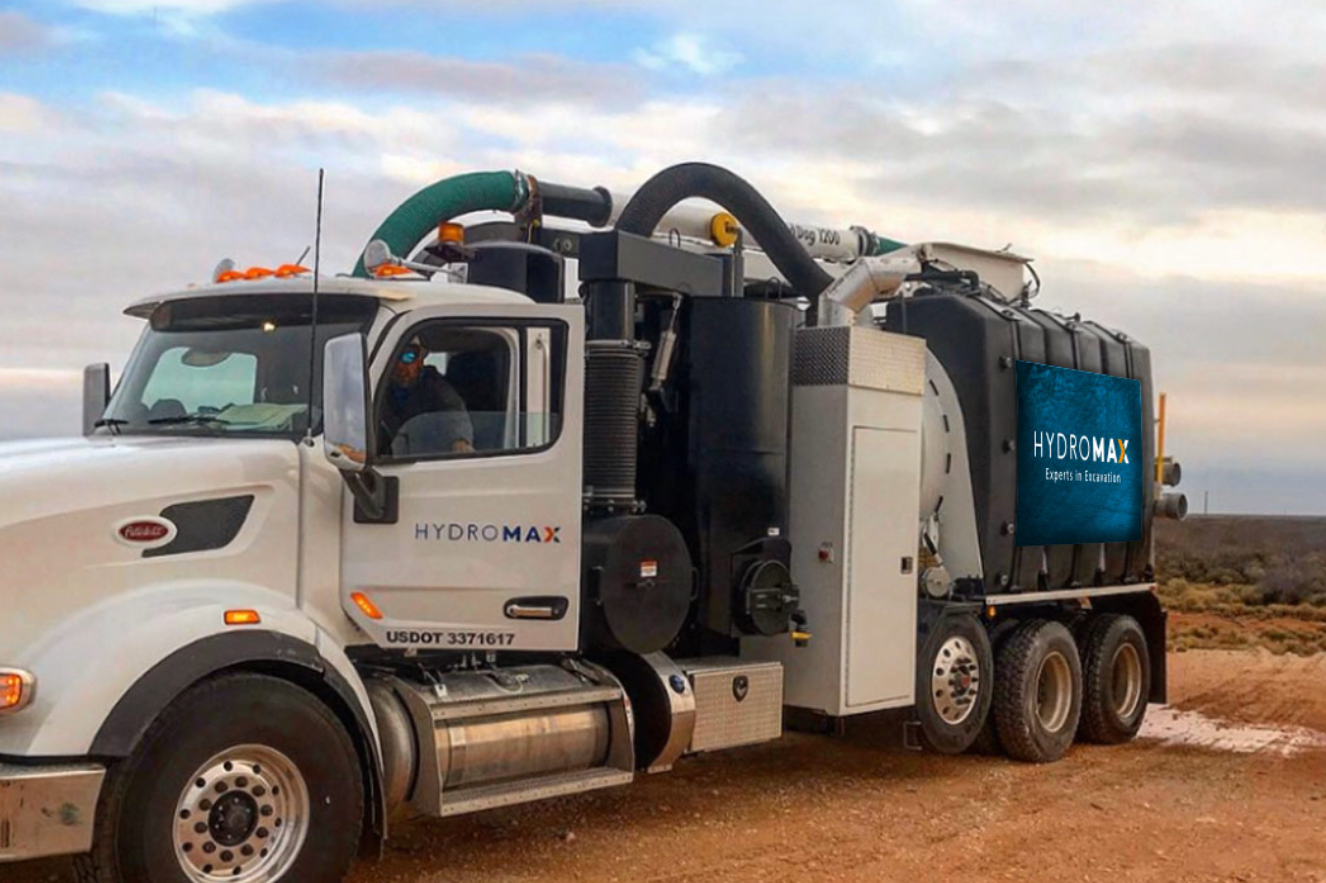CALL US TODAY · (888) 565-5665
Hydro-Excavation VS. Air-Excavation

Hydro-excavation and air-excavation stand as two innovative methods within the construction industry, both offering considerable advantages over traditional excavation techniques. Each technique is characterized by unique features that are suited to specific project needs.
Hydro-excavation utilizes high-pressure water jets to break down the soil, followed by a vacuum system to evacuate the debris. One standout attribute of hydro-excavation is the size of its trucks; they are larger and capable of holding significantly more dirt compared to other methods. This is particularly beneficial in larger-scale projects where substantial excavation is required. Hydro-excavation excels in hard soil conditions, offering rapid and efficient excavation. The high degree of precision when working around underground utilities, combined with its minimal environmental impact, further enhances its appeal.
Hydro-excavation can also cut and remove frozen ground and permafrost, a capability not found in traditional or air-excavation methods. Moreover, for pot-holing tasks—creating small ground holes to reveal underground utilities—hydro-excavation is a top choice, minimizing potential damage to the utilities and surrounding soil.


In contrast, air-excavation leverages the power of high-pressure air to disintegrate soil, coupled with a vacuum system for swift debris removal. It proves particularly advantageous in regions where water usage is restricted or not feasible, filling a niche that hydro-excavation cannot. Air-excavation is ideally suited to areas abundant with loose soil or sand, capable of rapidly eliminating large soil volumes. While it may not match the precision of hydro-excavation around underground utilities, it nonetheless offers a level of accuracy that is superior to conventional excavation techniques.
Both hydro-excavation and air-excavation require trained and experienced operators, which ensures not only efficient operation but also adherence to safety standards.
In essence, hydro-excavation and air-excavation represent compelling, modern alternatives to traditional excavation. Each boasts unique strengths and capabilities, making them an optimal choice depending on the specific requirements of the project and the environmental conditions. Deciding factors include the volume of dirt to be excavated, soil type, water availability, excavation precision, and the presence of underground utilities.

PRO-VAC IS PROUD TO BE A
SEATTLE SEAHAWKS SMALL BUSINESS PARTNER

CONTACT
All Rights Reserved | PRO-VAC



